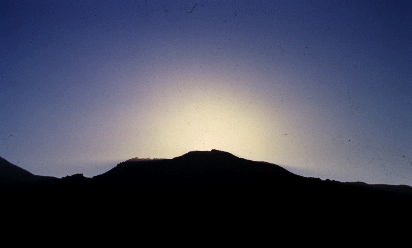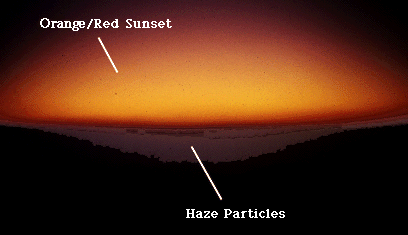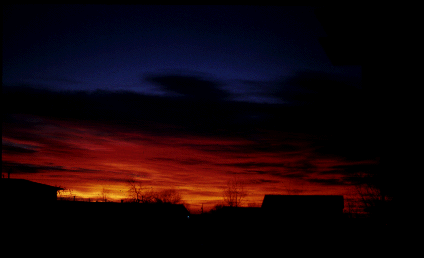Sunsets appear in a variety of colors.
The sun appears white at noon as all light wavelengths reach our eyes equally. As it sets, sunlight travels through more atmosphere, scattering shorter wavelengths (violet, blue) and leaving longer ones (yellow, orange, red) for colorful sunsets. Refraction makes the sun seem higher than it is. This refraction and scattering create twilight, the brightness we see when the sun is below the horizon.

As incoming sunlight passes through a more dense atmosphere, shorter wavelengths of light (violet and blue) are efficiently scattered away by particles suspended in the atmosphere. This allows predominantly yellow and red wavelengths of light to reach the observer's eyes, producing a yellowish-red sunset.

When there is a high concentration of particles in the atmosphere that are slightly larger than air molecules (like smoke, dust, and pollutants), shorter and intermediate wavelengths of light (violet, blue and yellow) are scattered away. Therefore, only the longer wavelengths (orange and red) reach the observer's eyes, giving the sun a orange-red appearance.
